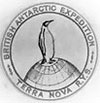Mandatory coursework
November 19th, 2002
Two classes consumed my day today. Antarctic waste training and a survival school refresher. It was a 45 minute lecture and video on how to toss away trash in Antarctica.
It seems that since the U.S. ratified the international Antarctica Conservation Treaty, it has been necessary by international law that all product of human activity on the continent be managed. This means any kind of human detritus, as well as people's actions.
It is illegal to modify the behavior of any native animal. If something you do causes a bird to fly away when it wanted to remain sitting, then you have committed a crime. If you make a penguin raise its flippers and squawk, you have committed a crime.
If a giant skua tries to peck your eyes out and you swat at it with a thermal mitten, you go to international jail, wherever that is.
Things get reasonably complex when dealing with trash. There are at least twelve categories of trash, and more if you ask the trash management people to get picky about it.
Food waste is pretty interesting. A beer can that hasn't been rinsed is food waste. Once you've rinsed it out, it becomes light metal.
They're very serious about garbage segregation--so much so that people are paid to go "dumpster diving" to weed out cans that are officially light metal from greasy half-eaten burgers and floppy cold pork rinds that become food waste.
Old bandaids and dental floss are contaminated biohazards. Unused bandaids and dental floss are construction waste.
And so on.
You are expected to take your time sorting your trash. Stewardship of the continent is everyone's responsibility.
The second class I took was called PUSH, or the survival school refresher. We were refamiliarized with the contents of a USAP survival bag. For those of you who aren't familiar with the bag, they come in one and two person versions. The bag itself is very thick plasticised kevlar colored deep red. It contains:
- A tent, tent stakes, a snow fluke, and a hammer
- Light sleeping bag(s), designed to augment the Emergency Cold Weather gear you're always supposed to be wearing when you go somewhere that might require a survival bag
- Freeze dried food for two people for four days.
- A camp stove and fuel (if you're traveling on a helicopter--the fuel is separate if you're on a fixed-wing aircraft)
- A VHF radio
- A book on Antarctic survival
- A ridiculously small first aid kit
- A trashy novel (no kidding) to read while you await rescue
We learned about travelling on the sea ice, the different types of cracks and pressure ridges, and when it was safe to drive which trucks across the frozen ocean. We learned the three types of aircraft that land on the sea ice in descending order of size are the C-17, the C-141, and the C-131. The C-17 weighs some 400,000 pounds and can land on ice 18' thick.
The problem with landing planes on the ice, apparently, is in letting them sit. If they stay in one place too long they begin to sink. The depressions left by the wheels may form cracks that descend to the liquid water below. That water can rise into the depression and freeze, freezing the plane to the ice. So, the planes have to be moved regularly.
We also learned the thicker the ice is the higher it rides in the water. The amount of ice between the ice surface and the water surface is called "freeboard" and is similar to the nautical term.
The rule of thumb for driving vehicles across a crack on the ice is that for ice less that 30 inches thick, the vehicle should not be driven across a crack where the crack width is greater than 1/3 the footprint of the vehicles tread or tire.
For instance, a truck tire is considered to have a "footprint" of about 6 inches. That means you shouldn't drive a truck across a crack in the ice that's wider than 2 inches if the ice around the crack is less than 30 inches thick.
A tracked vehicle called a Pistin Bully has a footprint of 9 feet and can go across pretty wide cracks.
We relearned the warning signs of hypothermia. Shivering. Excessive urination. Confusion. Irritability. And eventual, loss of consciousness. In all cases the cure was to get warm. The fastest way to get warm when outside is to drink a warm beverage. The next best thing to do is eat, and finally, move around. Therefore the slogan: Drink, Eat and Be Merry will help you remember how to apply your warming first aid.
We lit camp stoves and built tents in the machine shop. Nobody wanted to go outside, so we didn't bother setting up the HF radio to try to contact the south pole station. We all had done it already in Happy Camper School.
Now I am re-certified to go out into the field. We're going to try to get our equipment on a helicopter this Thursday, and we will travel on Monday barring any terrible storms.
